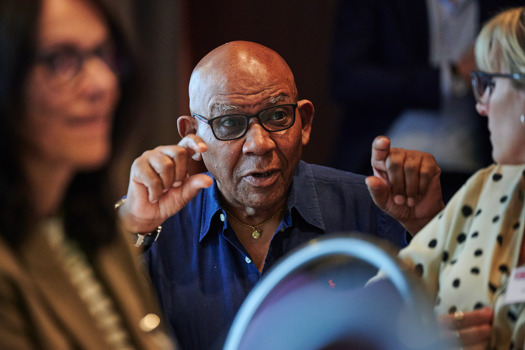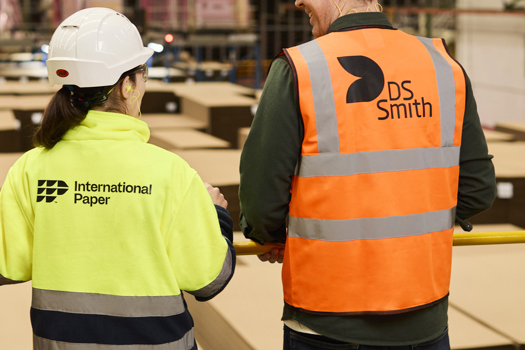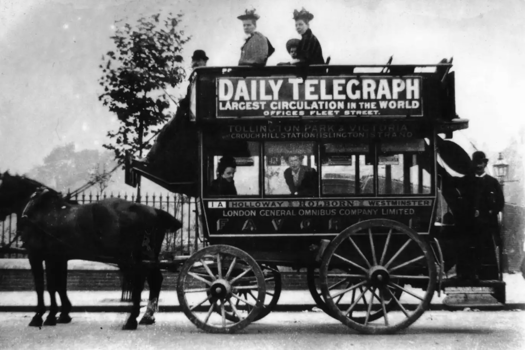There is increasing pressure – from consumers and government – for every part of the manufacturing supply chain to improve its environmental performance and print will play a key part of the eco transformation.
The environment and our impact upon it is a topic of much debate across all walks of life, from manufacturing and construction to the service industries and travel.
From industrial giants talking about capturing carbon emissions, to supply chains working on setting targets, sustainability is a keyword, and particularly so in the run up to COP26 in Glasgow in November.
There are champions of the environment and sustainability, often seen on TV and heard on radio, while there are climate change sceptics filling the social media platforms to the brim with their “detailed arguments” and highlighting so-called conspiracy theories.
In the print industry, as in myriad other areas, there’s many a company website that proudly boasts of eco-credentials. Websites and web pages filled with talk about recycling and paper and carbon footprints, illustrated with colour-coordinated graphics and pie charts.
But what does it actually take to be meaningly sustainable? Are businesses who lay claim to being sustainable doing much to back it up?
In fact, if you think about it, can the print industry, which essentially takes materials and makes something, become entirely sustainable in the near term, or in the long term?
Or, with the best will in the world, could it ever truly come about?
It is clear that a lot of print companies talk about sustainability, and showcase their credentials.
As an example, Northern Flags in Leeds highlights its “flag material EnviroFlag”, which is manufactured entirely from recycled plastic bottles.
And if you hit the Anglia Print website, it’s right there from the off – signs that say Reduce, Reuse, Recycle, and there’s a strong statement that reads: “Anglia Print strongly believes that all companies have environmental and ethical responsibilities and this ethos underpins everything we do.”
But for Daniel Clark, marketing manager at Leeds-based Northern Flags, sustainability is more than something green about products.
As part of their Action Now initiative, Northern Flags now has at least one eco-friendly alternative for every single product in its range.
The company says it is about offering what the client needs, and slowly but surely trying to transition to a point where eco-products are the standard.
Clark says: “It’s not been a process without challenges, such as carrying out due diligence on products and then the supply chain also.
“You have to cut through the marketing bluster and understand whether or not the claims are backed up.”
There’s a hint here that there may well be businesses out there who talk a good sustainable story but cannot show the real evidence.
Back to the products at Northern Flags though. Why not change completely, in one fell swoop, the whole catalogue of items? Surely that could be an option?
“The next step is to have sustainable products as standard,” says Clark. “But, you can’t alienate the customers, many of whom are smaller businesses who cannot afford the green premium.”
Cost is a factor. But, for Clark, being a sustainable business is not just about products.
Northern Flags is looking at all aspects of the business, from installing LED sensor lights, to better hand dryers, and talking with staff about any small changes they can make.
Clark adds: “The whole team has to be fully invested in the green ethos, and we include suppliers too. The momentum in the industry is huge at the moment and we should all be helping to keep that pressure on.”
That it is a subject that dominates the print chat is undeniable. At the recent Visual Media Conference, sustainability was the main focus of many of the presentations.
But for all the chat, the drive to go green isn’t being harnessed by all. Why? What could put a brake on the drive to go green?
Clark concludes: “There may be eternal factors, such as the current uncertainty around the economy and a wariness about investment. However, print, by its very nature, is not a historically eco-friendly sector, but if this industry is thinking and talking about sustainability, then there is hope for everyone.”
John Popely is managing director at Anglia Print, which has offices in both Norwich, Norfolk and Beccles, Suffolk.
He’s been in the print industry for 41 years, but says that it “dawned on him early doors” that the print industry could be highly detrimental to the environment.
His company proudly shouts about its ethos, and the fact it has “been described by Greenpeace as the UK’s most decorated printing company in recognition of our array of external certifications and engagement with schemes that promote and facilitate best environmental and practice”.
That’s a proud statement for all to see on the Anglia Print website. And Popely is keen to show that the company talks the talk and also walks the walk.
Not for him the so-called greenwashing. And, says Popely, it won’t wash anyway in this day and age.
He’s adamant that many so-called ‘green’ companies merely pay lip service to sustainability, and that it is in fact up to individuals – not governments – to change.
“Unless individuals take a stand, nothing will change,” he stresses. “We do get a lot of business because of our eco credentials but we also lose some because, after all, cheap will often win out.”
Cost is, once again, a factor, and it might be a big step for a business to change, particularly a smaller company, knowing that it could cost them some income, and, therefore, profit.
Print margins are already badly squeezed, so finances will obviously be a big concern.
Making the change
Popely says: “If people want to change, it is up to them. There might be some cost restraints but there are things you can do. Change the electricity supplier to a renewable one. Monitor outputs, whether its electricity, mileage, or gas. If you are looking at suppliers, check if they have the right ISO accreditations, and check the carbon footprint of products or equipment. Source things like paper from Europe in order to cut down on transportation miles.”
These are useful tips. In effect, a series of small actions leading to bigger change.
Back in March of this year, the Kettering site of Go Inspire Eclipse, a division of Go Inspire Group, announced it had become the largest commercial printer in the country to offer its customers Carbon Balanced Print, meaning it had been newly certified to have its carbon emissions offset by World Land Trust (WLT).
Printweek has now learned that the whole Go Inspire Group is now certified, meaning that print production across its Kettering and Leicester sites is covered.
The carbon offsetting programme at Go Inspire was begun by innovations director Simon Hartlett, who knew that he wanted to do something about sustainability.
He says: “I started the ball rolling, researched the market and took the idea to the board. Smaller companies were doing things but there wasn’t anyone with our production capabilities doing the carbon offsetting.
“It’s the right thing to do for our business. There has been a lot of negative press about the print industry and sustainability, but if you look at it, people are oblivious about how much carbon is used when sending an email for example.”
Go Inspire already uses certified paper, sourcing only FSC or PEFC stock, but Hartlett says that this is only the start of the sustainability journey.
He adds: “We work closely with companies such as Heidelberg, and with ink manufacturers to look at how we can improve all that we do, and we’re setting up an internal group to look at where we need to focus.
“You’d like to think that the print industry as a whole can develop a carbon-zero sector as technology develops around us, this is hopefully something the industry can achieve in the future, this will be a long road but we have started our journey at Go Inspire.”
It is evident that many printers and companies allied to the sector are doing something to reduce impact on the environment. Some are well on the journey but can’t quite see the sea yet, while others are just packing the (EV) car’s boot ready to get going.
Keep pushing forward
And that’s fine, says Dominic Harris, the co-founder at CarbonQuota, as long as there are goals along the way to reach and they keep moving forward.
CarbonQuota proudly boasts that it is “the only system that brings together independent science, analytics and industry expertise to create credible carbon emission calculations for buyers and sellers of print and packaging”.
Harris is adamant that the printing industry, which must measure and manage its carbon footprint, can lead the way when it comes to sustainability within the UK manufacturing sector. But, he says, while there are some highlights, there is a lot of work still to do.
He says: “I think that there is a very small handful of companies leading the way, but many businesses need to modernise their sustainability story. That’s not to say they are not compliant, as they may well have ISO and recycling schemes in place, but these things are the basics.
“It’s about carbon accounting, baselining the emissions and building a reduction plan before using credible offset schemes for what they can’t reduce right now.”
Harris says that most companies cannot do the carbon accounting work themselves, so need to employ an advisor or a staff member, with external certification or verification becoming the norm. This cost element can be a commercial barrier. It costs money to do the work.
But he adds: “There are two key factors. I believe legislation is coming that will force all businesses to address the issue. The current legislation only covers a very small percentage of businesses, mainly large business via SECR.
“Mega brands really are focused on the sustainability credentials of their supply chain, particularly with the de-carbonisation element. This is being seen in many projects, as mega brands are asking suppliers to have net zero targets to work towards.
“They don’t have to be there now, but they will have to be working towards them. If they want to work with the big brands, they will have to do it.”
Back at Anglia Print, the company says it does not do greenwash. It talks the talk and walks the walk.
This is another aspect that Harris highlights, big brands can smell greenwash a mile off. If you’re going to say the right things but not evidence them, it simply won’t wash.
And, in agreement with Popely, Harris says there are things that companies large and small can be doing.
Changing light bulbs to energy-efficient ones is one of many simple steps that can be taken. Ensuring devices are switched off when not needed. Choosing print machines where you can track energy use. Making sure buildings are insulated properly (for more, see our Technology Feature on page 54).
However, one of the biggest things, and perhaps the most important, is education. Print companies must educate themselves about what carbon is, why sustainability is important, and what behaviours need to change in order to create a more sustainable industry.
The information is out there. Two Sides was created back in 2008 to create a forum for the industry to work together and maximise customer confidence in products.
Carbon Balanced Paper works in partnership with the World Land Trust to help businesses to reduce their carbon impact.
As well as CBP, there are standards that are the norm, like FSC or PEFC, and ISO 14001, and then there are others too, such as B Corp, where certified companies can demonstrate that they are invested in social and environmental performance.
Is there any excuse for not being more sustainably-responsible? Companies large and small are doing it. They’re seeing the benefits. The tools are there. Maybe it’s time more printers get on the sustainable journey?










